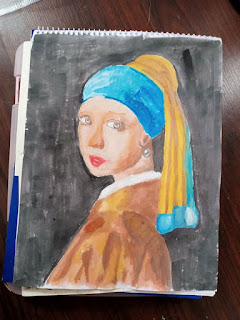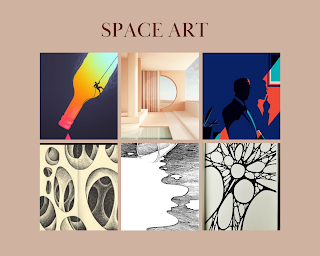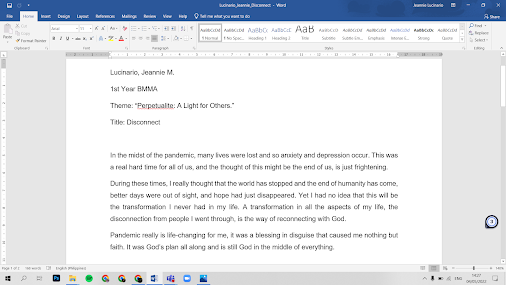Recreation of Renaissance Art | Digital and Traditional Art
Self Portrait 1504 - 1056 | Raffaello Santi
I recreated Raphael's "Self-Portrait" using ibis Paint X and Canva.
As you can see on the right side is the original image of the painting of the late artist.
I honestly had a hard time deciding how to start this project because digital art is not my forte, I'm more on traditional art which explains why my art is not that exceptional.
So this is the mini process of recreating this digitally.
First, I added a layer and then traced or outline the original picture. You can see there are patches in there, the purpose of that is for the tonal value of this work. I was trying to get the lightest tone of the paint so I did that.
Next, I hid the layer that contains the original picture, and that is the result. Then I tried adding some details about his curly hair.
Here you can see I tried applying some colors onto his face, but that was a fail because I don't know what color palette I should use there. So I decided that I should make it simpler.
This is the result. I chose not to apply too much color, but I thought that it was too pale. So, I came up with an idea to put some colors on the background so it'll look appealing to the eyes of the viewers.
But before putting up some colors to the background, I first converted it to a transparent PNG using Photoshop. After that, I then use Canva to put a suitable background to it. Then viola! I know it's not that pretty, but at least I had fun recreating the artwork digitally.
---
Girl With A Pearl Earring 1665 | Johannes Vermeer
I tried recreating this artwork on a sketch pad and using watercolors.
First, I did a quick sketch on a sketch pad and then tried putting some watercolor on it. Honestly, this was the first time I use watercolor, that's why I was so nervous that I might ruin this one.
Then, I tried putting more colors and tried blending them as well. I know it's far from the original picture but I really am genuinely happy about this because this is not as disastrous as I'm expecting it to be.
Then on this one, I really tried blending the colors very well as I could, to be honest. I know this is not as beautiful as you're expecting it to be but I really tried my best as I could in making this one, and I honestly had fun making it. At first, I thought this could lead to another mental breakdown, but no.
While making this, I realized that I should have applied a lighter amount of colors at first so that it wouldn't become like this, but it's still okay though. After all, this is just my first time using watercolor. Also, I think I should practice more using it.
That's all, thank you so much I hope you had fun reading this blog even though it's not as creative as others but I really had fun creating this, and I think that's enough. :>
.png)
.jpeg)




.png)
.png)





.png)



























.png)

.png)
